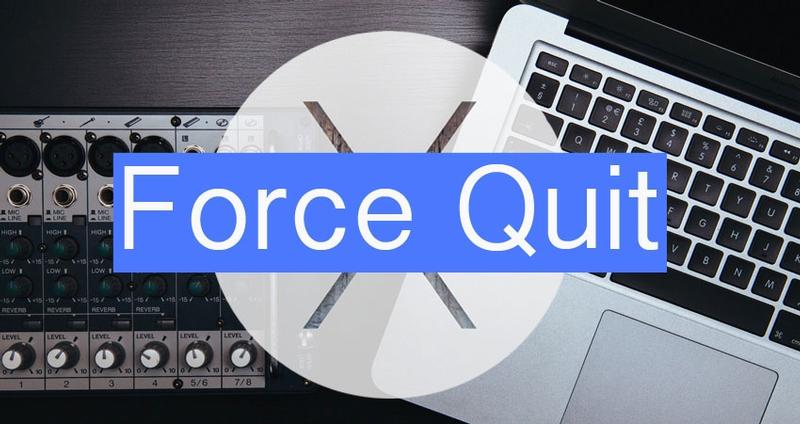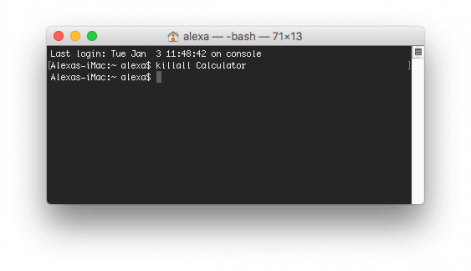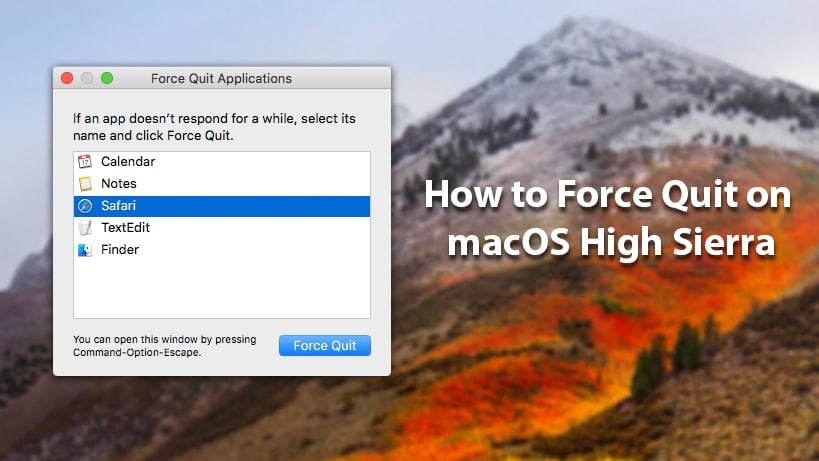

Step 4: Choose the application you need to quit from the Command column and copy the application’s PID. The PID is how your computer keeps track of open applications. The column on the very left displays the process identifier (PID) for each application. The Command column displays the name of each active application. This includes background applications, which often use a lot of RAM without us realizing it. Step 3: Terminal displays your CPU and RAM usage diagnostics, along with a table that shows all of your open applications. Using your keyboard, type the word Top and press the Return key. Step 2: After a few moments, Terminal will display your username, followed by a dollar sign. Step 1: Open your Applications folder, scroll down to Utilities, and launch Terminal. Method 5: Use Terminalįor technically savvy users, this method is complicated, but it’s the last trick we have up our sleeve if nothing else has worked. There is one last method you can try if restarting your device is out of the question. If that still doesn’t do the trick, it might be a good idea to save all your open work and restart your iMac or MacBook, which will likely solve the problem. Step 2: From the task manager that displays everything running on your computer, find the misbehaving app, select it, and click the button that resembles a Stop Sign in the top-left corner. Step 1: Open the Activity Monitor by clicking on the Spotlight icon - i.e., the magnifying glass in the top-right corner of your screen - and typing Activity Monitor in the text box. There’s no need to panic if this doesn’t close down the app because there are other avenues to find a solution. Step 2: Then, press and hold the Option key, which turns the Quit selection to Force Quit in the list of options. Step 1: Just Right-Click or Ctrl-Click on the misbehaving app in your Dock. You’re probably better off handling issues yourself by going in and choosing the specific apps you want to shut down. This program can be tricky and fickle, causing issues that might be hard to solve.

Step 3: Just select the application that’s giving you trouble and click Force Quit.Īlso, if you’re looking for even more keyboard shortcuts to speed up your computing on MacOS, check out our handy guide. Step 2: Like other methods, this will bring up the Force Quit Applications window.
FORCE CLOSE ON MAC BOOK WINDOWS
Step 1: Similar to Ctrl+Alt+Del on Windows 10, hit Opt + Cmd + Esc on your keyboard (on some Mac keyboards, Opt is labeled as Alt). If that doesn’t work, it’s time for keyboard shortcuts. Step 3: Just select the one that’s giving you trouble and click Force Quit at the bottom. Step 2: This should bring up the Force Quit Applications window that displays your open applications. Step 1: Click on the Apple icon in the top-left corner of your screen and select Force Quit from the list. Method 1: Use the Finderįirst up is Apple’s recommended course of action for when an app starts to wear out its welcome. These methods are compatible with MacOS Big Sur. Just a word of warning - using force quit should be a last resort. Once you hit force quit, it’s too late for all of that, and MacOS will immediately shut the app down without any prompts. Keep in mind that unlike the normal method for quitting an app, there aren’t going to be any prompts asking you to save your work or confirming your decision. Thankfully, you’ve got options, and there’s more than one way to force quit an unresponsive app in MacOS.

Whether MacOS is giving you a spinning beach ball of death or a particular app is taking too long to close, sometimes you just need to immediately close an app and get back to work. If you feel we missed out on anything be sure to leave that in the comments down below.
FORCE CLOSE ON MAC BOOK HOW TO
So after reading through our through and conclusive guide you should have all the information you need to figure out why why is safari frozen on my mac and how to fix it! Fixing Safari Unresponsive & Frozen On Mac Sometimes extensions no longer remain compatible with a newer version of safari till their updated and cache data can cause safari to become slow and eventually freeze. So opt out of the beta program if the issues are too frequent in nature.īrowser extensions and old cache data within Safari could also be the reason why it keeps freezing or crashing. It can take a while to work out the kinks and bugs within the software, so freezes and crashes can occur.Įspecially if you’re using beta software, as the versions released within beta are still being tested by the development team.

When a new version of Safari is released or a new version of macOS. Before we move on to our solutions it is important to realize why Safari might be crashing on your Mac, so that if this issue arises in the future you are better equipped to deal with.


 0 kommentar(er)
0 kommentar(er)
